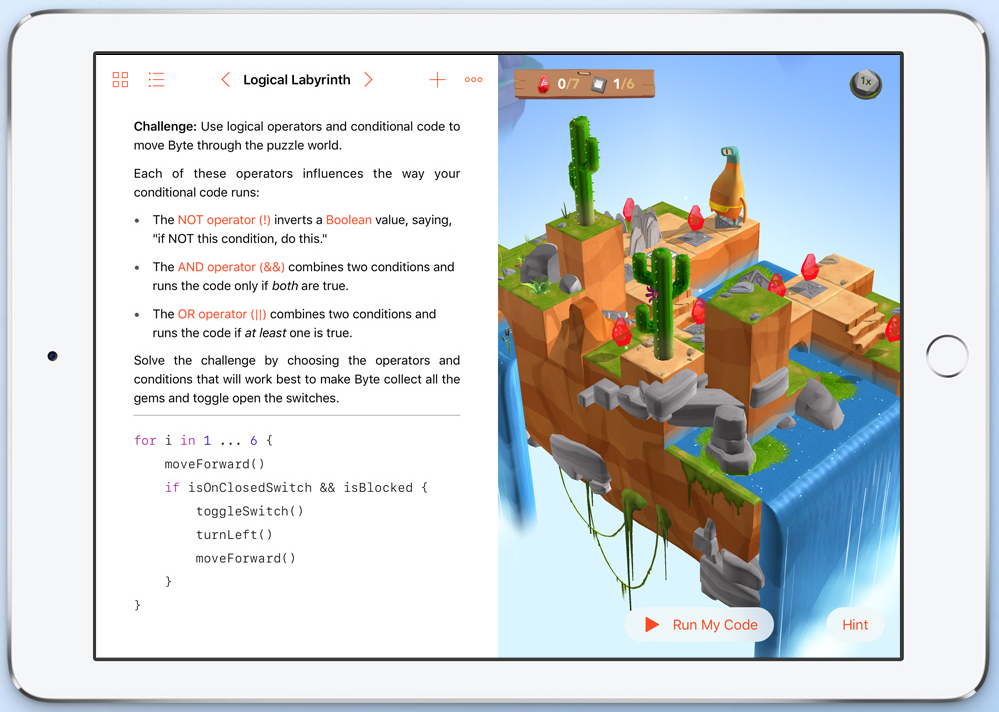5 Reasons You Should Learn Swift Now

All of us here at Flatiron School are excited about Swift. Apple’s new iOS programming language is quickly becoming the standard for iOS development among programmers new and old and companies large and small—so much so that we’ve switched the focus of our iOS Developer Program curriculum from Objective-C to Swift. If you’re getting into […]
All of us here at Flatiron School are excited about Swift. Apple’s new iOS programming language is quickly becoming the standard for iOS development among programmers new and old and companies large and small—so much so that we’ve switched the focus of our iOS Developer Program curriculum from Objective-C to Swift.
If you’re getting into mobile development, you will need to know Swift. But if that’s not reason enough to learn it, here are five reasons to get excited about Swift.
1. You’ll be able to build apps—soon.

In particular, iOS, watchOS, tvOS, and macOS applications. Being able to pull out your iPhone in front of friends or family to show them an app you made—after just 3-4 months of consistent study and practice—or better yet telling them to download your app from the app store is awesome. The knowledge that your potential audience could be in the millions makes developing applications that much more exciting. A key component of creating these apps is learning Swift.
2. It’s shiny and new.

Swift is a relatively new programming language, and there’s a ton of excitement around it. As Swift is open-sourced, you’re able to develop alongside the growth of this language as Apple takes input from anyone willing to submit an idea. That means you’re able to see Apple’s thought process behind every single decision they make. Each year, Apple holds their WWDC conference where Apple engineers discuss the intricacies of the Swift language along with all the new and exciting features. This conference brings with it a lot of energy—don’t be surprised if it inspires you to try implementing all the new concepts into your own apps.
3. It’s easy to understand.

Swift makes learning core programming concepts simple—even kids are learning the language on their iPads with Apple’s new Playgrounds app.

The great thing about Swift is that the syntax doesn’t get in the way of the fundamental programming concepts you’ll be learning. And once you learn these concepts with Swift, you’ll be able to much more efficiently and effectively recognize and employ them when learning other languages like Objective-C. Swift is an ideal first language to learn before diving deep into other mobile development languages.
4. The community is incredible.

There are so many passionate individuals looking to make apps. In beginning to learn Swift, you would be starting a process alongside many other individuals who are also starting their Swift programming journeys. There are a ton of great Swift meetups where you can meet Swift beginners and experts; you’ll find lots of free online courses, including Flatiron School’s new Swift course, where you can connect with others beginning to learn the language; and programmers on Stack Overflow, the Reddit Swift community, and Twitter are eager to help others and give fast answers. The time to start learning Swift is now!
5. Swift is open-sourced.
As Swift is open-sourced, in the coming years you might be able to write applications for other platforms in Swift. Maybe even Android! We’ll reach a place soon where you can write your server-side code in Swift as well as your front-end code. End-to-end apps written entirely in Swift—how awesome is that.
That’s five great reasons to start learning Swift today. But the best way to decide if you want to pursue a certain language? Try it out! You can start Flatiron School’s online Swift course for free!
Disclaimer: The information in this blog is current as of October 3, 2016. Current policies, offerings, procedures, and programs may differ.



